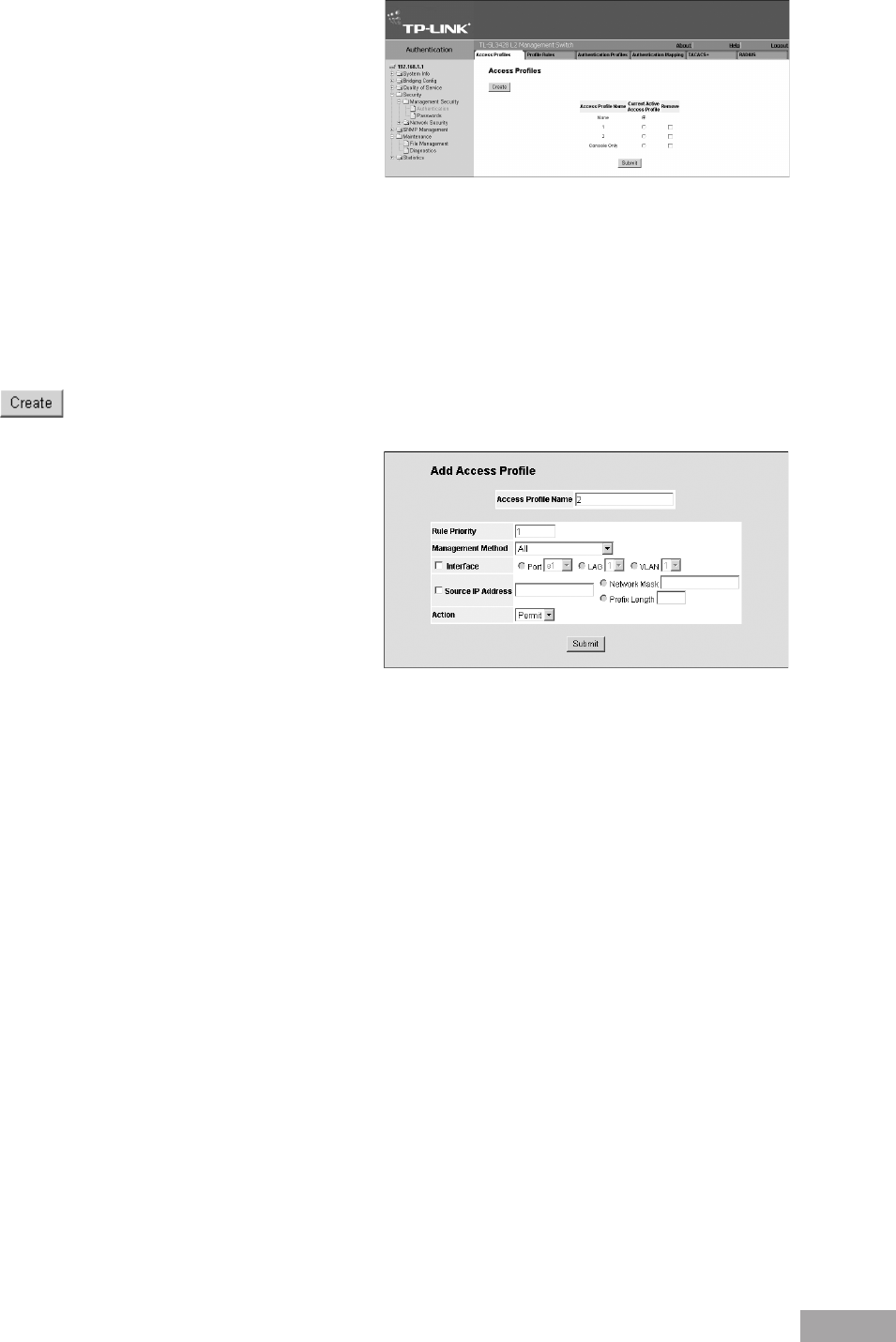
22
23
Figure 24: Access Prole Page
The Access Prole Page contains the following elds:
Access Profile Name — Defines the access profile
name. The access prole name can contain up to 32
characters.
Active Prole — Denes the access prole currently
active.
Remove — Removes the selected access prole. The possible eld values are:
– Checked — Removes the selected access prole. Access Proles cannot be removed when Active.
– Unchecked — Maintains the access proles.
Disable Active Prole — Disables the active access prole. The possible eld values are:
– Checked — Disables the active access proles.
– Unchecked — Indicates the access prole is currently active. This is the default value.
2. Click . The Add Access Prole Page opens:
Figure 25: Add Access Prole Page
In addition to the elds in the Access Prole Page, the Add
Access Prole Page contains the following elds:
Access Prole Name — Denes a new access prole
name.
Rule Priority — Defines the rule priority. When the
packet is matched to a rule, user groups are either
granted permission or denied device management
access. The rule number is essential to matching
packets to rules, as packets are matched on a rst-t basis. The rule priorities are assigned in the Prole Rules Page.
Management Method — Denes the management method for which the rule is dened. Users with this access prole
can access the device using the management method selected. The possible eld values are:
– All — Assigns all management methods to the rule.
– Telnet — Assigns Telnet access to the rule. If selected, users accessing the device using Telnet meeting access prole
criteria are permitted or denied access to the device.
– Secure Telnet (SSH) — Assigns SSH access to the rule. If selected, users accessing the device using Telnet meeting
access prole criteria are permitted or denied access to the device.
– HTTP — Assigns HTTP access to the rule. If selected, users accessing the device using HTTP meeting access prole
criteria are permitted or denied access to the device.
– Secure HTTP (HTTPS) — Assigns HTTPS access to the rule. If selected, users accessing the device using HTTPS
meeting access prole criteria are permitted or denied access to the device.
– SNMP — Assigns SNMP access to the rule. If selected, users accessing the device using SNMP meeting access
prole criteria are permitted or denied access to the device.
Interface — Denes the interface on which the access prole is dened. The possible eld values are:
– Port — Species the port on which the access prole is dened.
– LAG — Species the LAG on which the access prole is dened.
– VLAN — Species the VLAN on which the access prole is dened.
– Source IP Address — Denes the interface source IP address to which the access prole applies. The Source IP
Address eld is valid for a subnetwork.
– Network Mask — Denes the network mask of the source IP address.


















